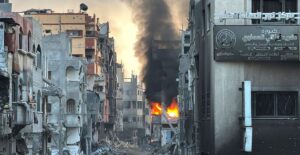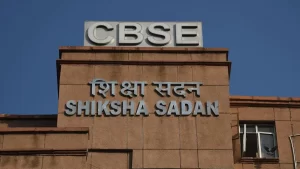Toxic smog chokes Delhi, Noida after Diwali; AQI set to worsen

The morning after Diwali, Delhi and its neighboring areas like Noida and Gurugram woke up to thick smog, as residents flouted the firecracker ban, worsening already high pollution levels. Despite restrictions, fireworks boomed across the National Capital Region (NCR), leading to severe noise pollution and poor visibility.
According to the Central Pollution Control Board (CPCB), Delhi’s Anand Vihar recorded an AQI of 395 in the “very poor” category at 6 a.m. on November 1. The air quality, especially PM2.5 levels, spiked to “severe” levels, posing significant respiratory risks.
In Haryana, Gurugram recorded an AQI of 322 on Diwali night, while Jind and Charkhi Dadri also saw AQI levels in the “very poor” range, reflecting the widespread impact. Nearby regions like Punjab and Chandigarh similarly reported “poor” air quality, illustrating a regional spike.
Last year, favorable weather kept Delhi’s AQI around 218 during Diwali, but this year’s mix of stubble burning, vehicle emissions, and stagnant weather fueled the pollution, creating a toxic mix.
Delhi’s government has banned firecrackers since 2017, encouraging green alternatives, but enforcement remains challenging. This Diwali, over 377 teams monitored neighborhoods and warned violators of legal action under the Bharatiya Nyaya Sanhita (BNS).
Yet, residents across East and West Delhi flouted restrictions, lighting up the sky with fireworks. Some people argue that bans are ineffective, while others believe they’re essential to reduce pollution levels.
The 24-hour AQI in Delhi hit 330, up from 307 the previous day. PM2.5 and PM10 levels surged to hazardous readings of 145.1 and 272 micrograms per cubic meter at 9 p.m., endangering children, the elderly, and those with respiratory issues. The blanket of smog reminded many of the “severe” pollution levels of 2020, when the AQI soared past 400.
While regions like Noida, Ghaziabad, and Gurugram reported slightly better air quality with “poor” AQI levels, Faridabad managed to stay in a “moderate” range at 181. The Delhi Pollution Control Committee (DPCC) warns that air quality could further deteriorate as winter approaches and stubble burning intensifies in Punjab and Haryana.
Over the years, Delhi’s Diwali AQI has fluctuated, from 312 in 2022 to a high of 414 in 2020. Government efforts to limit firecracker usage show limited success as each year, Delhi battles post-Diwali pollution, leaving its residents enveloped in a toxic haze.






